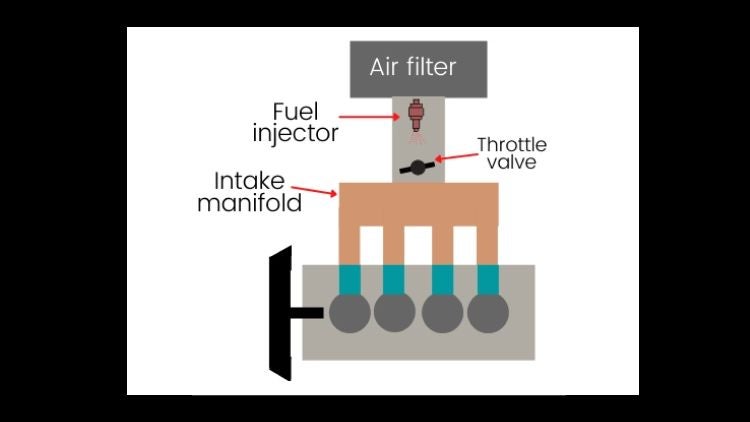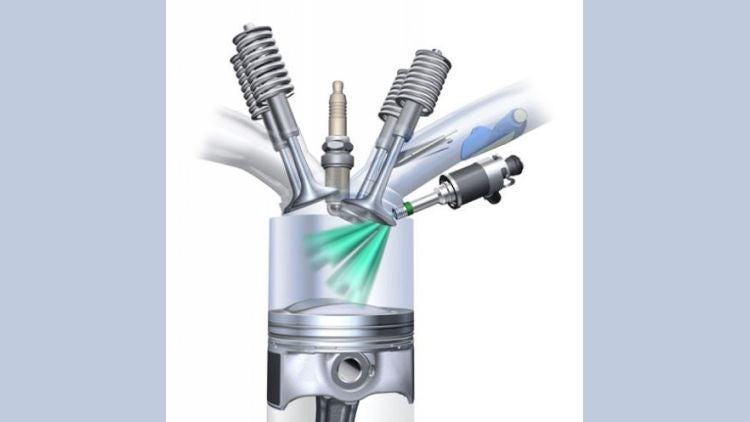Imagine the symphony of a finely-tuned engine — with the jazz of the pistons, the rhythm of the valves, and the harmony of the combustion and exhaust. Some might call it metal; some might call it RnB. And like any other great orchestra performance, all these systems need a conductor — the fuel injection system!
Just like great conductors ensure each instrument is in tune and each musician plays at the right time, the fuel injection system ensures that the right amount of fuel is delivered to the engine at the right time, in necessary proportions.
And just as there are many different types of orchestras, there are also many different types of fuel injection systems.
Let's start with the most basic type of fuel injection system – the carburettor. In the age of ever-changing technology, the carburettor might seem like a medieval fuel injection system, the grandfather of all fuel injection systems. It may be a little old-fashioned, like a grandfather, but it still gets the job done and holds itself to certain standards.
A carburettor mixes the fuel and air in an isolated chamber before swiftly delivering it to the engine. Think of it like an artist mixing colours on a canvas - the carburettor ensures the fuel and air are properly mixed before being relayed to the engine.
Learn More: From Fuel to Function: Working of the Car Engine Explained
Next up, we have the electronic fuel injection (EFI) system. This modern, high-tech system uses different sensors to measure the engine's needs and deliver the fuel accordingly. EFI systems are more precise, sophisticated, and efficient than carburettors, and they're becoming increasingly popular in today's cars.
Last but not least, we have the direct fuel injection (DFI) system. This is the top-of-the-line system, the crème de la crème, the top of the food chain of all fuel injection systems if you will. DFI systems deliver the fuel directly into the combustion chamber. This allows for much greater precision and efficiency, and it's becoming more common in high-performance cars because it prevents unnecessary fuel wastage.
Different Types of Fuel Injection Systems
- Single-point Fuel Injection or Throttle-body Injection
- Multi-point Fuel Injection or Port Injection
- Sequential Fuel Injection
- Direct Injection
Single-point Fuel Injection or Throttle-body Injection
 Single-point Fuel Injection or Throttle-body Injection
Single-point Fuel Injection or Throttle-body Injection
Single-Point Fuel injection or Throttle-Body injection (TBI) is a type of fuel injection system that's fairly simple and easy to understand. It is like a one-stop destination for all your fuel needs, like the corner store in your locality. In this system, a single injector is located in the throttle body in such a manner that it controls the airflow into the engine. After that, this injector sprays fuel into the intake manifold, mixing it with the incoming air before being delivered to the engine.
Chevrolet Camaro, Ford Mustang, Dodge Dakota, Jeep Cherokee, and GMC Sierra are some of the cars that have used Single-Point Fuel injection or Throttle-Body injection.
Multi-point Fuel Injection or Port Injection
 Multi Point Fuel Injection System
Multi Point Fuel Injection System
A Multi-Point Fuel injection or Port injection (PFI) is a more advanced and efficient system. In this system, multiple injectors are located in the intake manifold, one for each cylinder, allowing for more precise fuel delivery and better engine performance.
Honda Civic, Toyota Corolla, Ford Taurus, Nissan Altima, and Chevrolet Malibu are some of the cars known for their Multi-Point Fuel injection or Port injection systems.
Learn More: What is Multi-Point Fuel Injection System (MPFI)?
Sequential Fuel Injection
The Sequential Fuel injection system uses sensors to determine the needs and requirements of the engine and deliver the fuel accordingly. The injectors are triggered in a specific sequence based on the engine's RPM and load. This allows for even greater precision and efficiency, and it's commonly used in high-end cars and supercars.
Some of the cars that have been powered with the Sequential Fuel injection system are Mazda RX-7, Honda S2000, Nissan Skyline GT-R, Toyota Supra, and Mitsubishi Lancer Evolution.
Direct Injection

Direct injection, also known as direct fuel injection (DFI), is the epitome of fuel injection systems. The fuel is delivered directly into the combustion chamber in a DFI system. This allows for greater precision and efficiency, giving you more control over the combustion process and can result in increased performance and fuel efficiency.
Audi S4, BMW M3, Mercedes-Benz C-Class, Porsche 911, and Volkswagen Golf R are some of the cars equipped with a Direct injection system.
So there you have it – a brief and informative tour of the different types of fuel injection systems. From the old-fashioned carburettors to the high-tech direct injection, each system has its unique strengths and weaknesses, features and performances, flaws and imperfections. But, just like you and I, these systems are trying to get better every day. And that is something worth admiring.
So, the next time you're having a quiet moment, listen to the symphony of your engine and take a moment to appreciate the fuel injection system that's making it all possible. And remember, without a fuel injection system, your engine would be like a karaoke night without a monitor – just a bunch of off-key entertainers.
Frequently Asked Questions
1. What are the basic types of fuel injection systems?
There are four main types of fuel injection systems: Single-point, Multi-point, Sequential, and Direct injection.
2. Which fuel injection system is best?
Every type of fuel injection system has pros and cons, and the best system depends on the vehicle's specific needs.
3. What is the most common type of fuel injection system?
Currently, sequential fuel injection is the most widely used system in the industry. However, this is subject to change over time as technology and requirements evolve.
4. What is a carburettor fuel injection system?
A carburettor fuel injection system is a basic fuel injection system in which fuel and air are mixed in a chamber before being delivered to the engine.
5. What is an electronic fuel injection (EFI) system?
An electronic fuel injection (EFI) system uses sensors to measure the engine's needs and deliver the fuel accordingly, and is a more precise and efficient system than a carburettor.
6. What is a direct fuel injection (DFI) system?
A direct fuel injection (DFI) system delivers fuel directly into the combustion chamber, allowing greater precision and efficiency.
7. What is a sequential fuel injection system?
A sequential fuel injection system uses sensors to determine the engine's needs and deliver the fuel according to the engine's RPM and load.
8. What are the advantages and disadvantages of using a direct fuel injection system?
Advantages of a direct fuel injection system include improved fuel efficiency, increased power output, and better emission control. Disadvantages include higher cost and complexity, and it may be more prone to issues such as carbon build-up, which may require regular cleaning.








.webp&w=828&q=75)







.jpg&w=828&q=75)





.webp&w=640&q=75)
















